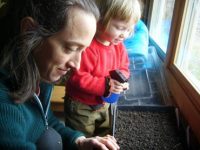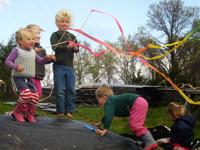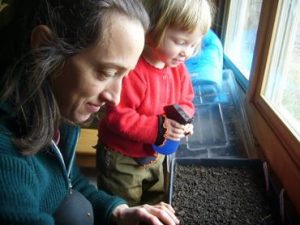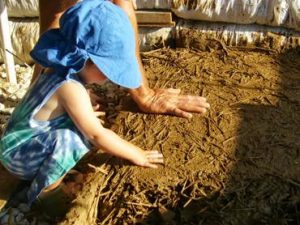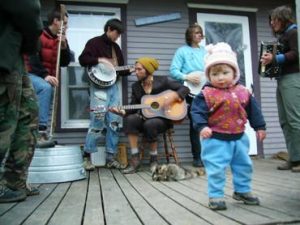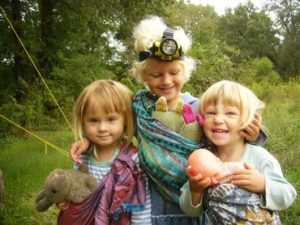“So I got suspended yesterday,” began the pierced, green-haired teenager with a grin. He was standing before a roomful of 50 friends, neighbors, and visitors at his community’s monthly No-Talent Show (“talent allowed but not required,” as the organizers explained).
Skyler, the teenager, cleared his throat and glanced around, betraying some nervousness behind his bold stance. “I wrote a poem that my teacher didn’t like, so he sent me to the principal, and she didn’t like it either, so I got suspended. So now I’m going to read you the poem that got me kicked out of school.” The room was completely silent, all eyes riveted on Skyler.
He began to read. In my opinion his poem contained nothing more provoking than a normal dose of adolescent rebellion, heavy with disgust at hypocrisy and abuse of power, spiked with a little profanity. It was clear why Skyler’s teachers in this small midwestern town had tried to silence his voice, and also clear that his critical thinking, integrity, and courage were healthy and strong. Now he was playing to his home crowd.
When he reached the last line, the room erupted in applause and whistles. Skyler, still grinning, shuffled offstage. Yet one more reason I live in community, I thought. A kid can stand up in front of his parents and his whole neighborhood, read aloud the daring poem that got him suspended from school, and receive full support and approval. If all teenagers could get that kind of support, more of them might survive to adulthood.
What Community Does for Our Kids
My daughter Cole, who is five, plays weekly with a group of children she calls her Puzzle Friends “because we fit together like a puzzle.” The three girls and two boys have known each other nearly since birth. Raising our daughter among like-minded adults has brought innumerable benefits to everyone in our family, although living in community has also brought some tricky challenges to child-rearing.
One of the most powerful ways it’s helped us is in expanding my daughter’s pool of adults to learn from. After receiving a hand-carved spoon from a community member as a gift, Cole decided she wanted to learn to carve wood. She asked me the man’s number, called him up, told him she wanted to take wood-carving lessons from him, checked with me about her schedule, and made plans on the spot. The next week she came home with a butter knife she had carved and sanded herself.
Another benefit of living closely with like-minded adults is that I know I can trust the people Cole hangs out with to hear and respect her, and also to model for her appropriate ways of behaving with others. All the families have practiced baby sign, elimination communication, co-sleeping, baby-wearing, and nonviolent communication. When two of her friends recently reported an ongoing conflict that had come up between them at my house, the two mothers and I conferred about it with the kids in conflict, and together came up with a response which so far appears to have reversed the unpleasant dynamic. The children felt empowered to change something in their lives that wasn’t working, and they experienced their parents and other adults as supportive friends and allies.
This kind of cross-generational teamwork and learning has become commonplace in our daily lives. As we learn to grow food, build our homes, collect rainwater, care for animals, and make medicine, our children are watching us and learning alongside us. Last week my daughter had picked a wild yarrow flower and was chopping it on the doorstep. “I’m making a tincture,” she informed me. Our housemate took a break from her work to show Cole how to infuse the plant in alcohol and label it. Later that day Cole showed it proudly to her father. “That’s amazing,” he told her, “I’m not even sure I know what yarrow is, let alone how to tincture it.” Good thing we don’t live out here alone.
Closeness and Separation
When at times her papa Mark and I feel sad that Cole has no brothers or sisters, we watch her with her friends and realize she’s not missing out on much. None of her closest friends have siblings, yet they have developed intense relationships with many of the opportunities for social learning that kids usually get from siblings. They walk to each other’s houses, have sleepovers, develop intricate make-believe realities, know the same songs and games, and remember each other’s favorite color and current name (I can’t keep track, they change their names so often).
They also argue over sharing, struggle to establish, defend, and subvert pecking orders, fight to be included by others, experience what happens when they resort to violence, and generally figure out how to use their power in the world for good and not for evil. Because of their parents’ commitment to our local community, these kids are likely to remain near each other, and may continue to have this closeness as they grow older.
Being in community also brings its particular pain and loss, which can feel especially intense for youngsters. People frequently come into our lives and grow quickly into a fairly close relationship with us and our children, sometimes even sharing our work day, meals, and social time as if they were part of our family. When Cole was three, a family with a baby stayed with us for several months, and she began calling the baby her sister. The family ultimately decided to move elsewhere, and Cole felt bitterly betrayed and heartbroken. Since then she has been much slower to accept anyone close to her heart. Another parent confided in me that her son had experienced a similar heartbreak over a departing intern, and had been standoffish with new members ever since.
I have seen the same pattern in myself—it sometimes takes more than a year for me to begin opening up to someone new, fearing always that it will lead to suffering in the end, but eventually going for it anyway. I hope our children are learning to make new friends and keep the old, as the song goes, but I do think that living in community is causing them to be especially cautious before they dive in deep.
What the Kids Do for Me
It’s important to me that my life yields a world that is better in some measure than it was before I was here. Being in community with young people helps me feel I’m creating the society that I hope will continue after I depart. When I learned recently a way of handling conflict called Restorative Circles, I began using tools from that practice that were age-appropriate for Cole and her gang. When someone calls a circle to deal with a conflict (“Alyson, Charles is leaving me out!” “How can I help?” “I want you to help him hear how I’m feeling!”), we sit down, make sure each person has a chance to be fully heard, let people explain why they acted as they did, and see if anyone wants to ask for anything to change. The kids run the circle; I’m just there to check whether they feel heard.
Admittedly, this is a pretty aware, creative, empowered group of preschoolers, but they immediately saw the potential in this technique, and I find myself facilitating a brief circle every couple of weeks. Conflicts have begun to lead to giggles instead of pouts. In offering them this tool, I feel confident I’m teaching them how much safer it is to step forward into conflict than to avoid it, and how much more likely to yield positive change in their lives. This is the world I want for them and their peers, and they are giving me the precious chance to help build it with them.
And that’s just one way they improve my life. The younger set is teaching me every day how to remain present (“Mama, look at this huge spider!”), how to embrace creativity (have you seen a four-year-old’s paintings lately?), how to have an open mind (“Of course this train might fly. Anything is possible!”), and about having the courage to take on new experiences (“Is ’sparagus spicy?”). Homeschooling is a whole new ball of wax when I consider that we’re learning together, each from and with the other.
From being with a variety of children we adults are also graced with their mirroring presence, which shows us how important it is to model the behavior we want to see in them. If we expect our children to express anger appropriately, then we’d damn well better learn to express it appropriately ourselves. If we want them to learn that it’s all right to cry, and that crying is part of healing, then we’d better learn to let others see our own tears, with compassion for ourselves and others in sorrow or pain. And if we want them to learn great communication skills, we need to actually listen to each other in meetings, and over the dinner table. When it comes to personal growth, it’s hard to find better motivation than my own kid’s future. And hey, bonus! It’s good for me too!
Bringing It All Home to You
We are experimenting with a number of things I think would work in many neighborhoods or villages. One of my favorites is our cooperative child care arrangement. Four families each send their child to our house once a week for three hours, then our daughter goes to each of their houses at other times of the week. So I have five kids for three hours, then I have four big chunks of kid-free time on other days—a precious commodity for any parent of a young child. All that’s needed to make this work is a group of parents who trust each other to care for their children.
We also do some homeschooling collectively. We share books, curricula, and resources—one mother is currently compiling a database of books available at our local library that are good for teaching history and science. For several years there has been a self-organized preschool at a large central building with a kids’ room and playground. One or two teachers from our community spend one half-day per week with whichever preschoolers show up, and parents compensate them in goods, services, our local currency, or dollars.
When I’m in town I’m often surprised at how few children I see at “grownup” events. Where we live kids are naturally integrated into many adult activities. Children here learn to be (reasonably) quiet during meetings, and in the past few months I’ve seen them participate alongside older people plastering houses, harvesting and planting, doing yoga, cooking pancakes, building fires, teaching songs, gathering wild edibles, cleaning the floor, smudging with sage at a ritual, shoveling compost at a work party, and even supplying dinner for the whole community. Last week when I went to pick up Cole at a five-year-old friend’s house after a playdate, she said, “But Mama, I can’t leave yet! Emory caught two bass today and we’re going to eat them for supper!”
Straddling the Cultural Divide
Sometimes when our kids interact with those not raised in community, there are minor culture clashes. Last month when visiting her great aunt, Cole stepped next door to meet the neighbors and their father and to try out their trampoline. After several minutes, from my vantage point behind the shrubbery, I heard their father call from the porch, “You boys get on! She’s had too long a turn! It’s your turn.”
“We don’t want to get on,” mumbled one of the boys.
“I’ll let them get on whenever they want,” Cole reassured their dad. “I’ll just get down.”
“I said it’s their turn!” shouted the father, obviously used to being the one who metes out justice.
“But they said they didn’t want to get on,” replied Cole, used to speaking directly, taking people at their word, and helping her friends resolve conflicts. The father didn’t know what to make of this and went back inside. And after another minute Cole got down of her own accord.
Sometimes a culture clash results in a more overt learning opportunity. Last summer when my brother’s family was visiting, we were out walking together. Cole wanted to go one way, but I insisted we go the other way, because of a plan I’d made that she hadn’t known about. She did what we call a “flop-down,” which is when she collapses spread-eagled on the ground and wails. “Sweetheart,” I said gently, “I can really hear how disappointed you are, and I’m glad you’re letting me know what you want, but we’re going the other way.” Then I waited a few seconds for her to cry it out.
My brother, wishing perhaps to help solve what he saw as a problem, told his daughter to go scoop Cole up for a hug and distract her. When her cousin got to her, Cole, who has healthy boundaries and also enough self-respect to know when she needs a good cry, pushed her away and cried harder. Her cousin returned crestfallen, and I was hard pressed to explain to her (and my brother) what it means to respect boundaries, and why we think it’s OK to just let a person cry for a minute. Before I was done talking, Cole had bounded up and was running on ahead of us, full of spirit and energy.
There’s a reason I waited until my late 30s to have a child. And that’s because I wanted her to grow up feeling like she and her peers could do anything. I wanted my child to be surrounded by loving, thoughtful people who valued trust, clear communication, compassion, and respect. I also wanted her to see adults practicing real-world three-dimensional skills like building homes, putting up wind turbines, and growing food. If I could start her off like that, I thought, she’d be able to handle whatever messes she found herself in. It took me a while to feel ready for the responsibility of launching that life. And now, here we are, raising superheroes. You can too. Up, up, and away!
Some names have been changed to protect individuals’ privacy.

